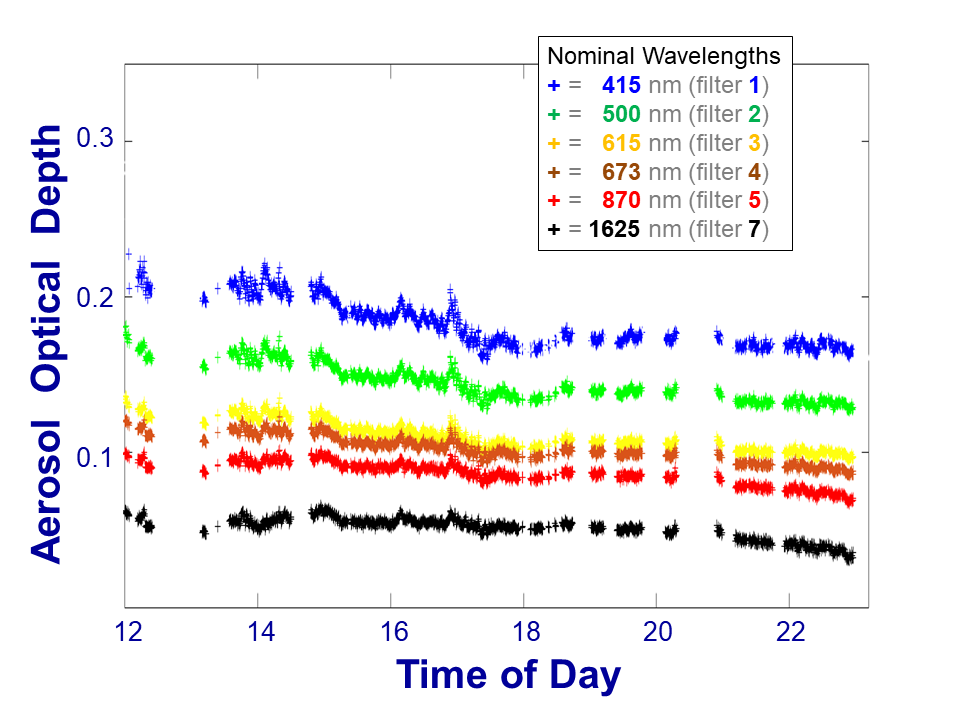New Aerosol Optical Depth Data Available for TRACER Campaign
Published: 18 June 2024

The Aerosol Optical Depth (AOD) value-added product derived from 7-channel multifilter rotating shadowband radiometer (MFRSR) measurements is now available for the 2021–2022 TRacking Aerosol Convection interactions ExpeRiment (TRACER).
AOD is the measure of the total aerosol burden in a vertical column of the atmosphere. The value-added product, known as AOD-MFRSR, reports cloud-screened AOD from the direct normal irradiance measured by MFRSRs at the Atmospheric Radiation Measurement (ARM) user facility’s ground-based sites.
AODs are calculated at wavelengths of 415, 500, 615, 673, 870, and 1625 nanometers (nm). The 940 nm channel is used to retrieve columnar abundances of water vapor.
ARM finished adding the near-infrared 1625 nm channel to its MFRSRs and other ground-based shortwave spectral instruments in fiscal year 2021. The longer wavelength allows for improved retrievals of aerosol and cloud properties. For example, it helps constrain the size distribution of large aerosol particles, resulting in more accurate retrievals of aerosol optical properties.
Scientists use AOD measurements to evaluate aerosol radiative forcing in earth system models. Because AOD is a measure of the aerosol burden in the atmosphere, AOD-MFRSR also allows a user to analyze variability of aerosol loading.
AOD-MFRSR 7-channel production data are available for the TRACER ARM Mobile Facility site in La Porte, Texas, from August 11, 2021, to October 2, 2022.
Scientists can use the TRACER data now. Future AOD-MFRSR 7-channel data will be available for the Surface Atmosphere Integrated Field Laboratory (SAIL) campaign near Crested Butte, Colorado.
More information about the data can be found on the AOD-MFRSR page.
For questions or to report data problems, please contact ARM translator John Shilling or developers Erol Cromwell and Krista Gaustad.
Access the data in the ARM Data Center. (To download the data, first create an ARM account.)
Data can be referenced as doi:10.5439/1756632.
Keep up with the Atmospheric Observer
Updates on ARM news, events, and opportunities delivered to your inbox
ARM User Profile
ARM welcomes users from all institutions and nations. A free ARM user account is needed to access ARM data.


















